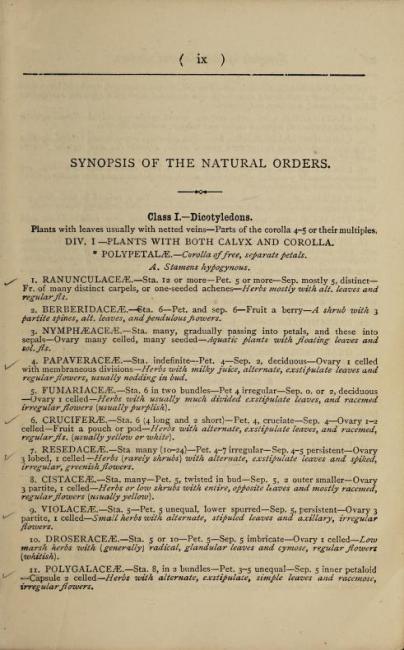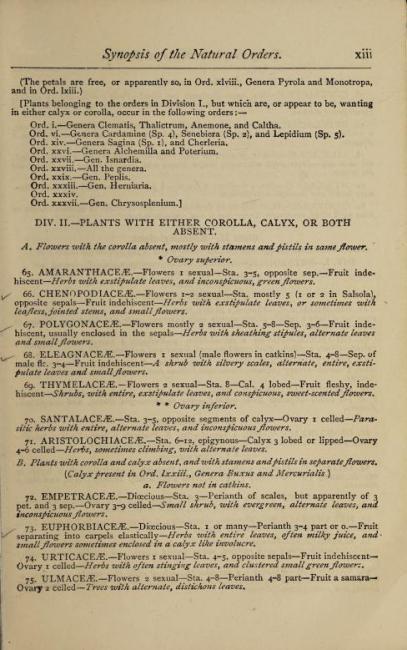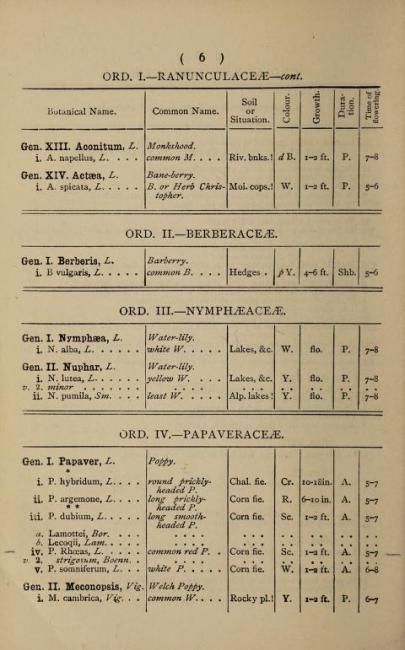Each week the Fisher Library highlights an item from one of its many collections available on the Internet Archive. This week, Rachael takes a look at a book from our Biodiversity Collection.
April is the month where most of us are longing for spring sunshine. This time of year, the weather can change on a dime. It could be warm and sunny one day and snowing the next. Unpredictable weather is the mark of a Canadian spring, but this week’s entry should help readers feel as though Spring weather is right around the corner. It might even inspire some gardening.

This week we are looking at The Botanist’s Pocket-Book: Containing in a Tabulated Form the Chief Characteristics of British Plants. The book was written by W.R. Hayward and was published in 1883. Similar to many books during this time, the full title of the book is incredibly long. The title continues: “With the Botanical Name, Common Name, Soil or Situation, Colour, Growth, and Time of Flowering of Every Plant, Arranged under its Own Order.” The full title demonstrates to the reader what they can expect to find throughout the pages. Hayward’s book is the fourth edition to the series. It begins with a preface to the second and third editions. The main difference between the previous and this edition was a thorough revision of the appendix and an update to the index with references to the latest edition of “Sowerby’s English Botany.”

Following the preface is a brief introduction by the author, explaining his reasoning behind creating the book. He claims he was looking for a quick reference book on the subject that could help him identify British flowering pants, and as one did not exist, he decided to write it himself. After the introduction, Hayward has included an explanation of abbreviations (pictured above.) The columns include the abbreviation, what it stands for, and each column is a part of a specific genre such as colour or growth. A “Synopsis of the Natural Orders” follows the table of abbreviations. Here, plants are listed by their Latin name. It is interesting to note that a number of plants listed have check marks next to them. It is not certain who made these markings, though they appear to be made in pencil, possibly by whoever owned or donated the book to the Fisher.


There is no table of contents for this book. Unfortunately, this makes it difficult to quickly skip to a desired section. There are also no images of any of the plants or flowers listed in the guide. The fact that there are no illustrations could indicate that Hayward assumed that whoever would be using this book would be so well-versed in British plants that they would know what everything looked like. The book title is called “The Botanist’s Pocket-Book,” so perhaps it was intended for botanists and natural scientists, but not the average British citizen. Try not to let that deter you though and be sure to enjoy some spring gardening!
- Rachael Fraser, TALint student
